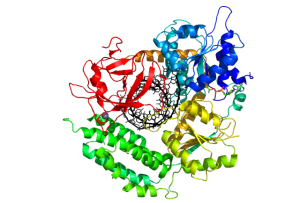THURSDAY, 3 NOVEMBER 2011
It has been known for some time that pattern recognition receptors are responsible for the detection of cellular intruders. These receptors bind to specific molecular signatures carried by an intruder and, as a result, change shape. This is thought to trigger a chain reaction that ultimately signals the presence of the intruder to the surrounding cells, but the exact mechanism by which this occurs has been unclear. The team at the EMBL has now uncovered the secret for the receptor RIG-I, which targets a wide range of viruses including influenza, rabies and hepatitis.In response to viral infection, RIG-I recognises and binds to viral RNA, causing the cell to produce and secrete interferon, an anti-viral molecule. When interferon is detected by surrounding cells, hundreds of genes that act to combat infection are switched on. By using X-ray crystallography, the EMBL researchers found that the key step that linked the detection and signaling processes lay in the structural change of the receptor. In the absence of viral infection, the part of RIG-I that binds to viral RNA is exposed, while the domains responsible for signaling are hidden and hence deactivated. Once the viral RNA is detected, RIG-I changes shape, only then uncovering its signaling domains and triggering interferon production.
Although this study was performed on one specific receptor, the scientists believe that a similar mechanism is likely to underpin the activity of a number of other immune receptors, responding to different viruses or bacteria. The findings, published in Cell, thus significantly advance our molecular understanding of the innate immune system.
Written by Katy Wei

